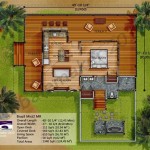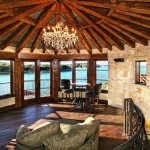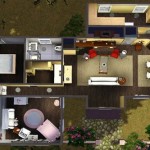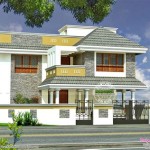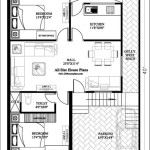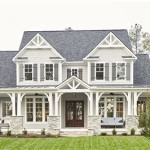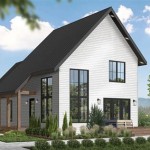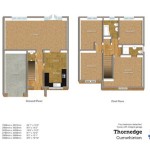House Plans for Sloping Blocks in Queensland
Queensland's diverse landscape often presents homeowners with sloping blocks, offering unique design opportunities and challenges. Building on a slope requires careful planning and consideration of factors such as site orientation, soil stability, and local council regulations. Selecting appropriate house plans is crucial for maximizing views, minimizing excavation costs, and creating a functional and aesthetically pleasing home.
One of the primary advantages of building on a sloping block is the potential for capturing breathtaking views. Homes designed to embrace the elevation can showcase panoramic landscapes, creating a connection between the indoor and outdoor living spaces. However, achieving these views requires careful placement of windows, balconies, and decks, which must be incorporated into the house plans from the outset.
Several design approaches are commonly employed for sloping blocks. Split-level designs are a popular choice, utilizing the natural slope to create distinct living zones on different levels. This approach can minimize excavation and create a sense of privacy between areas. Another option is a pole home design, which elevates the living space above the ground, minimizing site disturbance and maximizing views. This approach is particularly well-suited to steeply sloping blocks and can be cost-effective in areas prone to flooding.
When selecting house plans for a sloping block, careful consideration must be given to site orientation. Optimizing solar access can reduce energy consumption by maximizing natural light and warmth in winter while minimizing overheating in summer. North-facing aspects are generally preferred in Queensland's subtropical climate. House plans should be designed to take advantage of prevailing breezes and minimize exposure to harsh western sun.
Soil stability is a critical factor in building on a sloping block. Thorough geotechnical investigations are essential to assess the soil type, bearing capacity, and potential for erosion. This information informs the design of the foundations and retaining walls, which are crucial for ensuring the structural integrity of the home. House plans should incorporate appropriate drainage systems to manage stormwater runoff and prevent erosion.
Local council regulations play a significant role in the design and construction of homes on sloping blocks. Queensland councils have specific requirements regarding building setbacks, building heights, and site coverage. These regulations are designed to protect the environment, maintain neighborhood character, and ensure the safety of residents. Before finalizing house plans, it is essential to consult with the local council to ensure compliance with all relevant regulations.
Choosing the right materials is another important consideration for sloping block house plans. Durable and low-maintenance materials are often preferred due to the potential difficulty of access for repairs and maintenance. Materials should also be chosen to complement the surrounding environment and enhance the aesthetic appeal of the home.
Accessibility is a crucial aspect of house design, particularly on sloping blocks. House plans should incorporate features that ensure easy access for all occupants, including those with mobility limitations. Ramps, lifts, and strategically placed entrances can improve accessibility and enhance the overall functionality of the home.
Budget considerations are paramount when building on a sloping block. The cost of construction can be significantly higher than building on a flat site due to the need for specialized engineering, excavation, and retaining walls. Working closely with a builder and architect can help to manage costs and ensure that the project remains within budget.
The design process for a sloping block home should involve a collaborative approach between the homeowner, architect, and builder. Open communication and a clear understanding of the client's needs and preferences are essential for achieving a successful outcome. The architect will translate the client's vision into functional and aesthetically pleasing house plans, while the builder will ensure that the construction process adheres to the plans and meets all relevant building codes.
Landscaping plays a vital role in integrating a home into its sloping site. Terracing, retaining walls, and strategically planted vegetation can stabilize the slope, manage water runoff, and enhance the aesthetic appeal of the property. The landscaping plan should be integrated with the house plans to ensure a cohesive and functional outdoor space.
In conclusion, building on a sloping block in Queensland presents both opportunities and challenges. Careful planning, consideration of site conditions, and adherence to local regulations are essential for achieving a successful outcome. By selecting appropriate house plans and working closely with experienced professionals, homeowners can create a functional, aesthetically pleasing, and sustainable home that maximizes the unique advantages of their sloping block.
Finding the right house plans for a sloping block in Queensland requires thorough research and consideration. Online resources, architectural firms, and building companies can provide valuable information and inspiration. Consulting with experienced professionals is crucial for navigating the complexities of building on a slope and ensuring a successful and satisfying building experience.

Sloping Blocks From Obstacles To Architectural Opportunities Brisbane

Sloping Blocks From Obstacles To Architectural Opportunities Brisbane

Sloping Block House Designs Brisbane Unique Homes

Building On Sloping Blocks Dion Seminara Architecture

Sloping Block Builders Gold Coast House Designs

Sloping Block House Designs Beautiful To Inspire Your Next Build
Home Designs For Sloping Blocks

Sloping Block Builders Brisbane Antech Constructions

Custom Home Builders Sunshine Coast

Home Designs For Sloping Blocks Mark Lawler Architects

